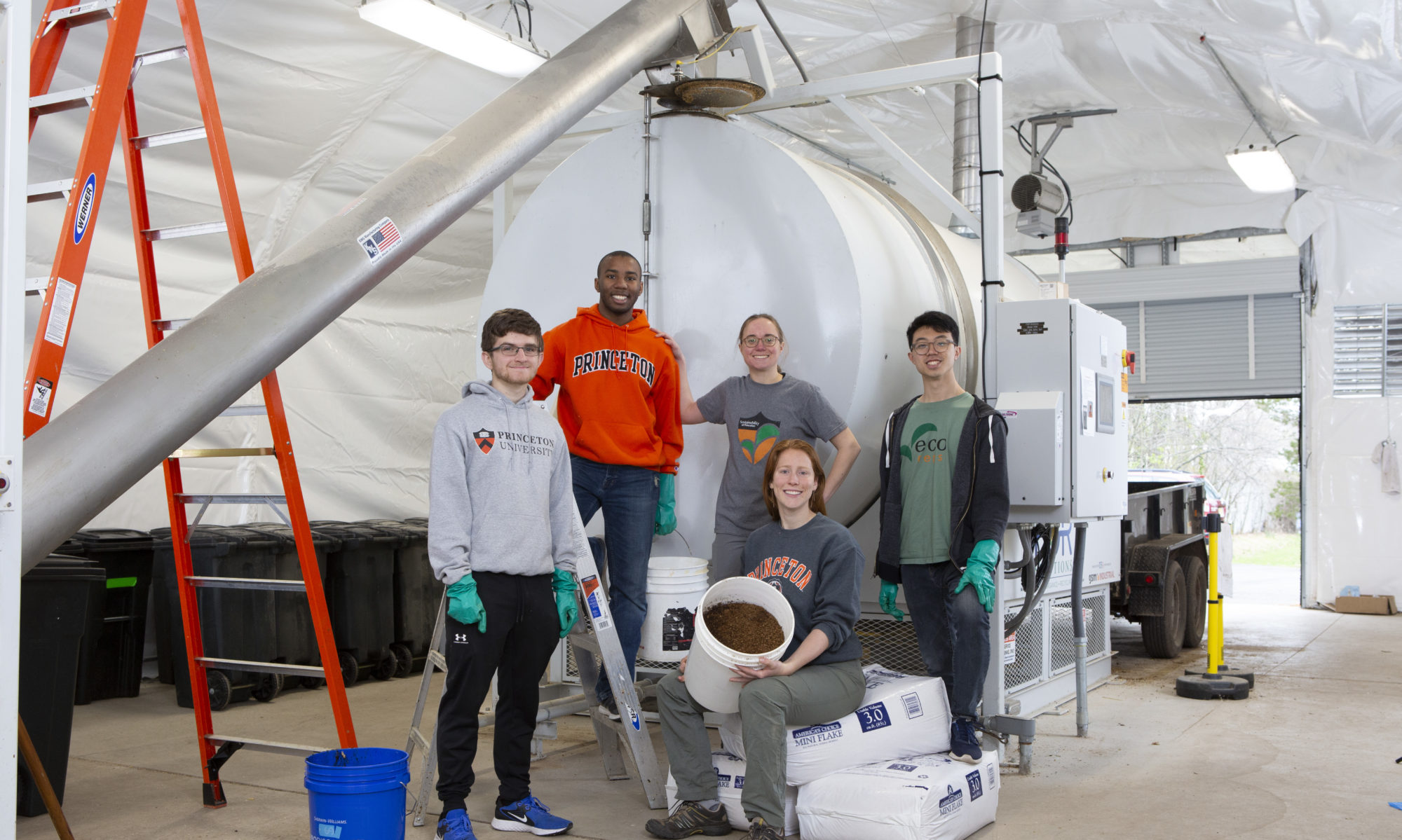Hello everyone! My name is Wesley Wiggins and I am the newest writer for the ComPOSTer. I am a Princeton University undergraduate in the Class of 2021 and I am concentrating in the Department of Geosciences while obtaining a certificate in Environmental Studies. I am a member of the Princeton University EcoReps and was the former co-president of the Princeton University Geosciences Society or PUGS. Additionally, I have been an Operational Assistant at the S.C.R.A.P. Lab since Fall 2018 so I’ve spent plenty of time with SCRAPPY and working with food waste and composting.

Photo Credits: Linh Nguyen
In the Fall 2019 semester, I worked on a project which incorporated the composter for my class ENE321: Resource Recovery for a Circular Economy taught by Civil and Environmental Engineering Professor Z. Jason Ren. This class discussed the topic of a circular economy which is the idea that resources should be reused and repurposed instead of how our linear economy simply puts items into waste. Our final project for this course was to create a business idea and pitch for a company that incorporates elements of the circular economy, and when I first heard of this idea my mind immediately turned to compost.
Composting takes food scraps and uses it to create a soil additive that enriches the earth which can assist in growing new food and/or keeping the environment healthy. My team also wanted to incorporate a new element and produce something from compost. Through our research, we learned that the process of composting emits biogenic CO2 and we wanted to repurpose that gas and produce something new. Our minds turned to the process of photosynthesis in which water and carbon dioxide contribute to building organic matter so we wanted to find a product that we could grow easily and then sell to consumers. This is when we came across the algae species, Arthrospira maxima and Arthrospira platensis more commonly known as Spirulina.

Spirulina are a globally cultivated algae species for food production because of their high protein content and nutritional value. We decided that the nutritious algae would be an excellent food product to sell as our business product and the only thing left to decide was how to grow the spirulina. We decided that the best way to grow them and incorporate the compost would be to use a photobioreactor which is a closed system that would allow us to control the inputs and outputs of the spirulina growth mixture. We could also take the CO2 from an industrial composter like SCRAPPY and feed it into our photobioreactor to cultivate the spirulina.

After settling on an idea, my team had to settle on a company name and company roles. The members of my team were myself as the Chief Technological Officer, Jivahn Moradian ‘20 as the Chief Financial Officer, and Gabby D’Arcangelo ‘21 as the Chief Executive Officer. When deciding on a name we wanted something that represented both the algae and the use of carbon dioxide from the composter. So the name we settled on was AlgaeHG or AlGHG. The GHG in the title is short for Greenhouse gases which we are using to create our product in the form of CO2.
Though the company was created for a class project, the three of us had quite a fun time brainstorming the science, engineering, finances, and algae puns for our little class project. And we were thankful to Gina and the S.C.R.A.P. Lab for letting Gabby and Jivahn visit the Lab during my shift, and for all of the other assistance, we were able to receive.

Photo Credits: Professor Z. Jason Ren

